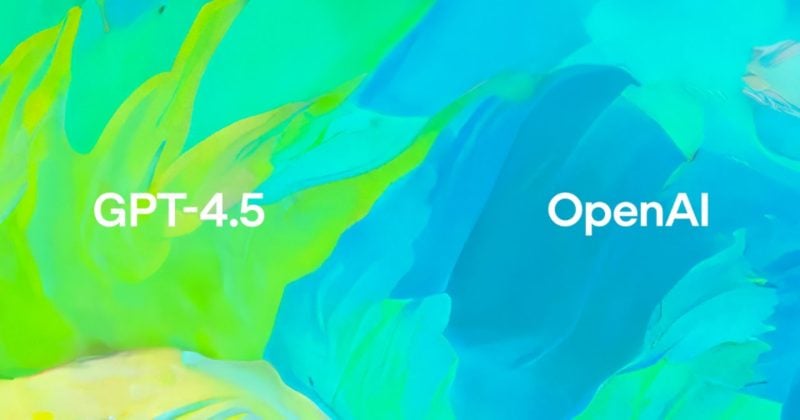The AI Revolution and GPT-4.5’s Entry
Artificial Intelligence has evolved from a sci-fi fantasy to a daily utility in less than a decade. OpenAI, a trailblazer in this space, has consistently pushed boundaries, and its latest release—GPT-4.5—is no exception. Touted as the “most advanced language model to date,” GPT-4.5 arrives with promises of emotional depth, sharper accuracy, and creative prowess. But what’s really going on under the hood? How does this model differ from its predecessors, and why does it matter? More importantly, how are people reacting to this leap? Let’s dissect GPT-4.5 from its core, explore its implications, and unpack the buzz surrounding it.
What’s New in GPT-4.5? Breaking Down the Hype
GPT-4.5 isn’t just another incremental update. It’s a reimagining of how AI interacts with humans. Here’s what sets it apart:
1. Enhanced Emotional Intelligence: The Rise of “Empathetic AI”
For years, critics argued that AI lacked the human touch. GPT-4.5 addresses this by integrating emotional intelligence into its responses. Imagine a chatbot that doesn’t just answer questions but senses frustration in your tone and responds with patience, or a virtual assistant that detects anxiety and offers calming suggestions.
How It Works: The model analyzes linguistic cues (e.g., word choice, punctuation, context) to infer emotions. For example, phrases like “I’m overwhelmed” trigger supportive responses, while sarcasm might be met with lightheartedness.
Real-World Use: Mental health apps could leverage this for crisis counseling, while educators might use it to tailor feedback to students’ emotional states.
But skeptics ask: Is this genuine empathy, or just sophisticated mimicry?
2. Reduced Hallucinations: Chasing the Truth
“Hallucinations” AI-generated fabrications have long plagued language models. GPT-4.5 claims to slash these errors through reinforced factual grounding.
Behind the Scenes: OpenAI trained the model on a curated dataset with stricter fact-checking protocols. It cross-references statements against verified sources mid-conversation, reducing “making things up.”
Implications: Journalists and researchers could rely on GPT-4.5 for drafting accurate reports, though vigilance remains necessary.
Yet, no system is infallible. As Reddit users note: “Fewer lies, but still a long way from perfect.”
3. Improved Writing and Problem-Solving: The Creative Collaborator
GPT-4.5 shines in creative and technical tasks. Writers report smoother co-authoring experiences, while coders praise its debugging suggestions.
Case Study: A novelist using GPT-4.5 for plot ideas receives nuanced character development tips, while a developer gets step-by-step explanations for fixing a bug in Python.
Why It Matters: This positions GPT-4.5 as a versatile tool across industries, from education to software engineering.
However, creative professionals worry: “Will AI dilute human originality, or amplify it?”
The Technology Behind GPT-4.5: How Did We Get Here?
Advancements in Unsupervised Learning
GPT-4.5’s backbone is its scaled-up unsupervised learning. Unlike supervised models that rely on labeled data, it learns patterns from raw text, mimicking how humans absorb language through exposure.
Training Data: While specifics are undisclosed, it likely ingested diverse sources—books, scientific papers, social media to grasp context and nuance.
Architecture Tweaks: Rumors suggest a larger neural network with optimized attention mechanisms, enabling deeper contextual understanding.
The Cost of Intelligence: Computational Demands
Bigger brains need more power. GPT-4.5’s size means it requires massive computational resources, raising concerns about accessibility.
Energy Consumption: Training such models consumes electricity equivalent to small towns, sparking environmental debates.
API Access: OpenAI hints at restricted availability due to costs, potentially limiting startups and independent developers.
Significance of GPT-4.5: Why This Milestone Matters
Humanizing Technology
GPT-4.5’s emotional acuity could revolutionize fields like customer service, where bots often frustrate users with robotic replies. A telecom company, for instance, might deploy GPT-4.5 to handle complaints with empathy, reducing escalations.
Democratizing Expertise
By assisting with coding, writing, and problem-solving, GPT-4.5 lowers barriers to entry. A student in a remote area could learn calculus through interactive tutoring, while a non-native speaker might polish their resume with AI feedback.
Challenges and Considerations: The Flip Side
1. The Price Tag: Who Can Afford GPT-4.5?
With soaring computational costs, OpenAI faces a dilemma: prioritize profit or democratization? Startups fear being priced out, while critics argue: “If only corporations can access this, inequality widens.”
2. Limits of “General Intelligence”
Despite improvements, GPT-4.5 struggles with complex reasoning. Ask it to solve a graduate-level math proof, and it might falter. Specialized models like AlphaGeometry still reign here, highlighting that AI excellence remains domain-specific.
3. Ethical Quandaries
Bias: Could emotionally intelligent AI manipulate users’ feelings?
Job Displacement: Will creative roles shrink as AI becomes a co-author or designer?
Public and Expert Reactions: Excitement vs. Skepticism
Enthusiasts: Tech forums buzz with experiments, from generating poetry to simulating therapy sessions. One user tweeted: “GPT-4.5 helped me write a eulogy—it felt profoundly human.”
Skeptics: Ethicists warn of overreliance, citing risks like diminished critical thinking. A Forbes article cautions: “Emotional AI could exploit vulnerabilities if unregulated.”
Middle Ground: Many advocate for balanced integration, using AI as a tool rather than a replacement.
The Future with GPT-4.5: What’s Next?
OpenAI’s roadmap likely includes addressing computational inefficiencies and expanding multimodal capabilities (e.g., integrating vision and sound). Meanwhile, society must grapple with questions:
Regulation: How do we govern emotionally intelligent AI?
Education: How do we teach future generations to coexist with AI collaborators?
source :






0 Comments